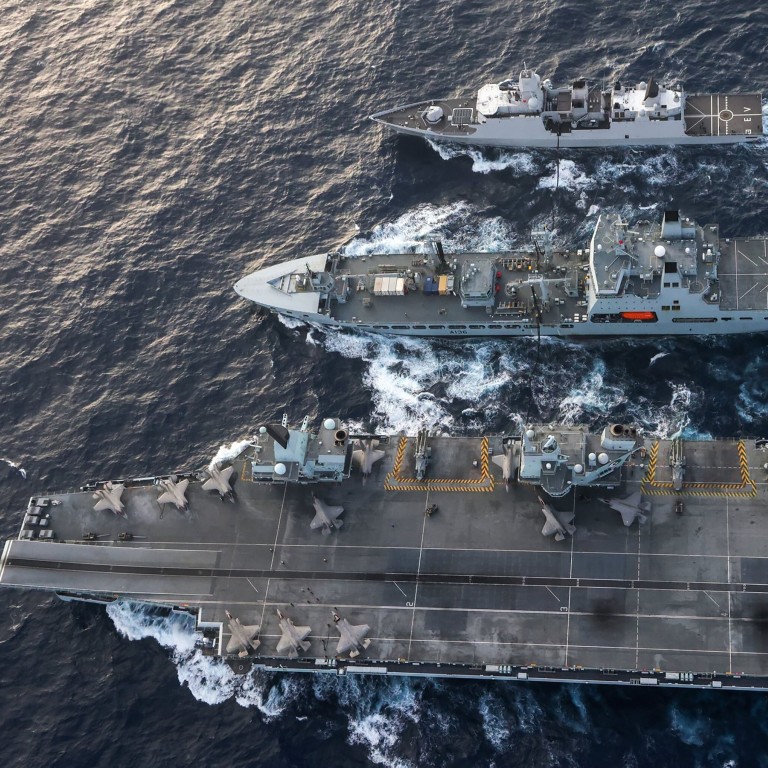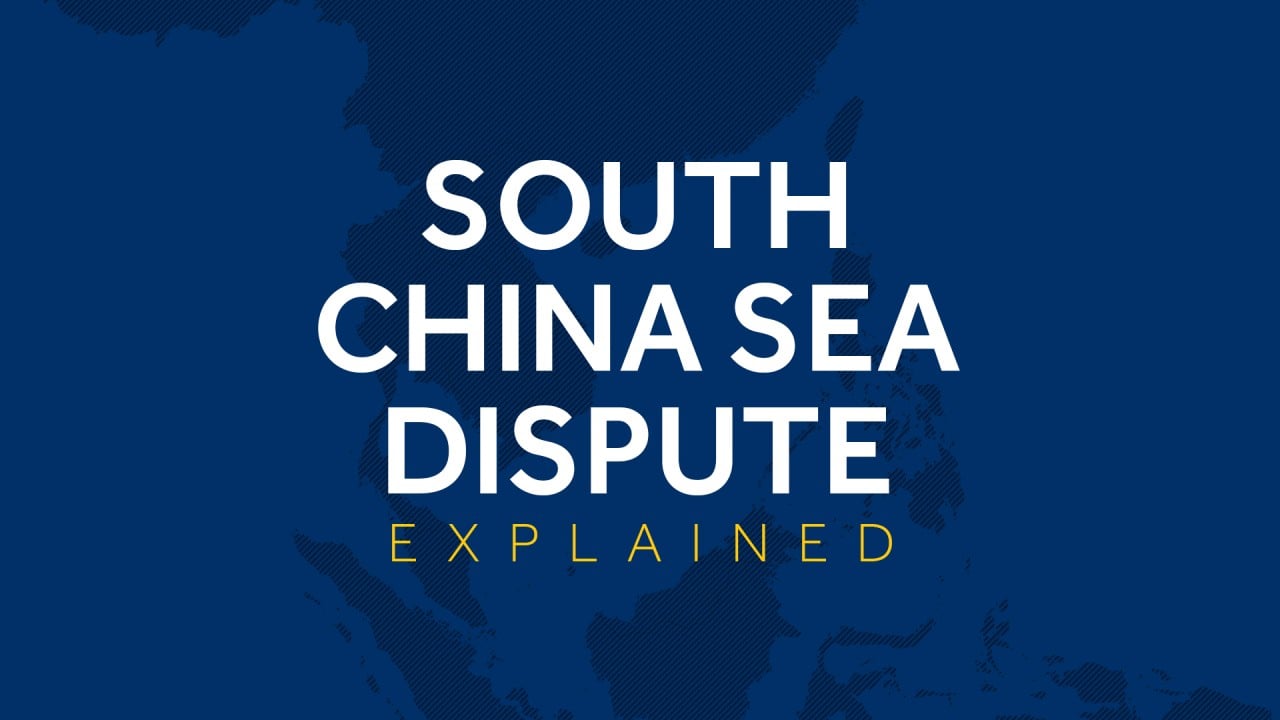
South China Sea: British warships ‘didn’t sail near’ Chinese artificial islands
- HMS Queen Elizabeth avoided direct challenge to Beijing’s territorial claims in the contested waters
- Source close to the PLA says Chinese military is ‘satisfied’ with Royal Navy’s low-profile activities
In doing so, Britain has avoided joining the United States in directly challenging China’s 12-nautical-mile territorial claims in the disputed waters.
Beijing’s foreign ministry said in a faxed reply to queries on Wednesday that the warships “didn’t enter within 12 nautical miles of Chinese islands in the South China Sea, according to [our] information”.
“China hopes navy vessels of other nations abide by international law when sailing across the South China Sea, respect the rights and sovereignty of the coastal nations, and avoid actions that damage regional peace,” the ministry said.
British defence sources had told The Guardian newspaper that there were no plans to stage a naval confrontation with China in the South China Sea, after the Chinese military warned against provocation. The British defence ministry did not reply to a request for comment.
A source close to the People’s Liberation Army said China’s military had been “satisfied with the British carrier strike group’s low-profile naval presentation” in the waters.
The British warships left Britain two months ago and are on a 42,000km (26,000-mile) mission that will continue until the end of the year, including exercises with the US, Australia, France and Japan in the Philippine Sea.

03:23
The South China Sea dispute explained
Tensions have been rising in the South China Sea, where Beijing has territorial disputes with neighbours including Vietnam and the Philippines. Beijing has turned reefs and atolls it occupies into at least seven artificial islands since 2015, and also built airstrips and other military facilities, drawing condemnation from the US and other claimants in the region.
The US has challenged China’s sovereignty claims, sending naval ships within 12 nautical miles of the artificial islands about 40 times since late 2015, which it says is part of the US Navy’s freedom of navigation operations in the region.
Beijing to Berlin: clarify warship’s intentions in South China Sea or forget Shanghai visit
Last week, Chinese defence ministry spokesman Wu Qian said Beijing welcomed countries to conduct freedom of navigation exercises in the region but opposed “naval presence with provocative aims”.
“China’s military will take all necessary means to deal with [provocative moves] resolutely and effectively,” Wu said.
That could include “economic, technological and other means if Britain were to follow the US and challenge China’s red line over sovereignty issues”, according to Lu Li-Shih, a former instructor at the Taiwanese Naval Academy.

Collin Koh, a research fellow with the S. Rajaratnam School of International Studies at Nanyang Technological University in Singapore, said the US was the only nation carrying out freedom of navigation operations in the region. He said it would be “difficult, if not totally impossible, to get close allies and partners on board to do similar missions, either unilaterally or in conjunction with the US Navy”.
But Macau-based military expert Antony Wong Tong said the Queen Elizabeth and its support ships had already challenged China’s sovereignty by sailing within the “nine-dash line” that sets out its territorial claims to 90 per cent of the waterway.
“The British strike group won’t wrap up its Asia-Pacific voyage until the end of this year,” Wong said. “So there’s still time for the warships to sail within 12 nautical miles of Chinese-claimed islands.”

